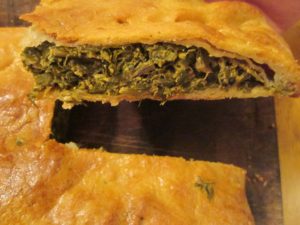 It’s Greece’s national dish and although it’s utterly mouth-watering, spanikopita (which translates literally as ‘spinach pie’) is filled with many of the ‘weeds’ we find growing wild or in our own gardens. As you forage for them, remember to collect only plants you can 100% identify – and never take them from areas that may have been sprayed or contaminated in any other way.
It’s Greece’s national dish and although it’s utterly mouth-watering, spanikopita (which translates literally as ‘spinach pie’) is filled with many of the ‘weeds’ we find growing wild or in our own gardens. As you forage for them, remember to collect only plants you can 100% identify – and never take them from areas that may have been sprayed or contaminated in any other way.
Pie pastry
Make a double quantity of Greek pastry dough.
Pie filling
3/4 of a 9 litre bucket of washed, well-drained, loosely-packed wild and garden greens (the more variety the better)*
¼ cup olive oil
6 free-range eggs
salt & pepper to taste
1 cup of crumbled feta cheese
*dandelion, fennel, puha (sow thistle), chickweed, NZ spinach, spinach, silver beet, lettuce, leek, spring onion, parsley, chicory, rocket
Method
Finely chop the greens. Whisk the oil and eggs together. Reserve 1/8 cup for later use. Add the egg-oil mix, crumbled feta cheese and seasoning to the greens, and stir vigorously. (This is your pie filling.) Leave it for 20-30 minutes for the greens to wilt.

Line a baking tray with baking paper. Grease the paper with olive oil.
Using the Greek rolling pin method, roll out the first half of the Greek pastry dough. Unroll the dough from the rolling pin onto the greased baking paper (this is the base of your pie).
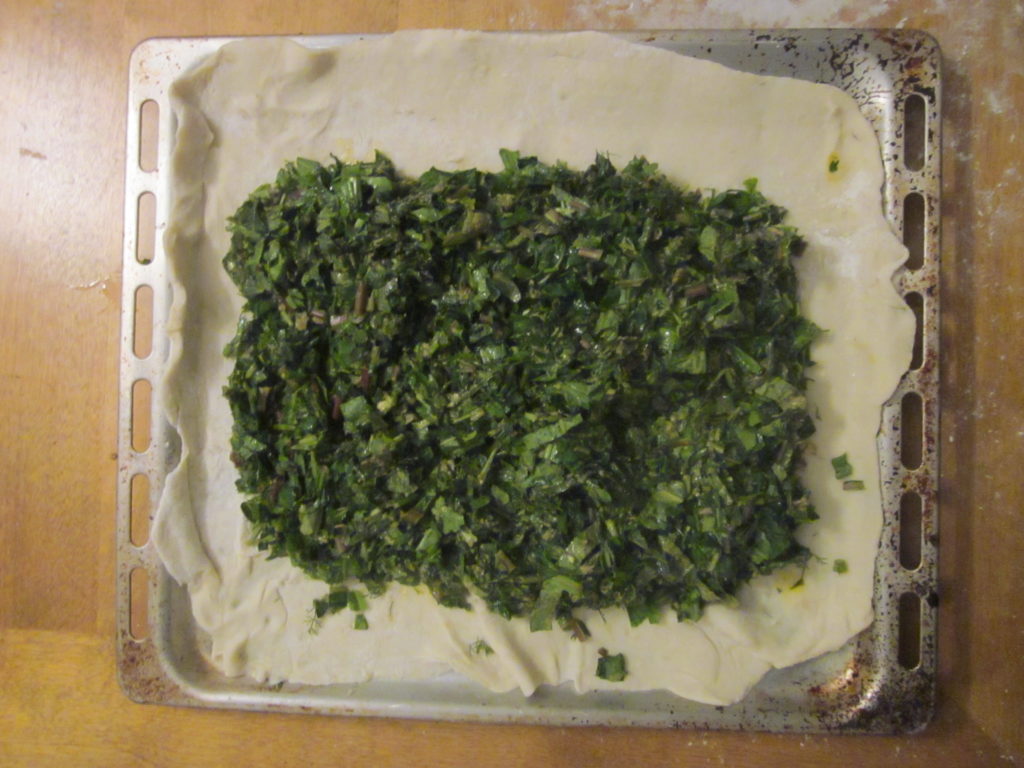
Pile the filling onto it, keeping the filling back about 6 cm from each edge of the base.
Roll out the second half of the Greek pastry dough. Unroll it from the rolling pin over the filling (this is your pie lid).
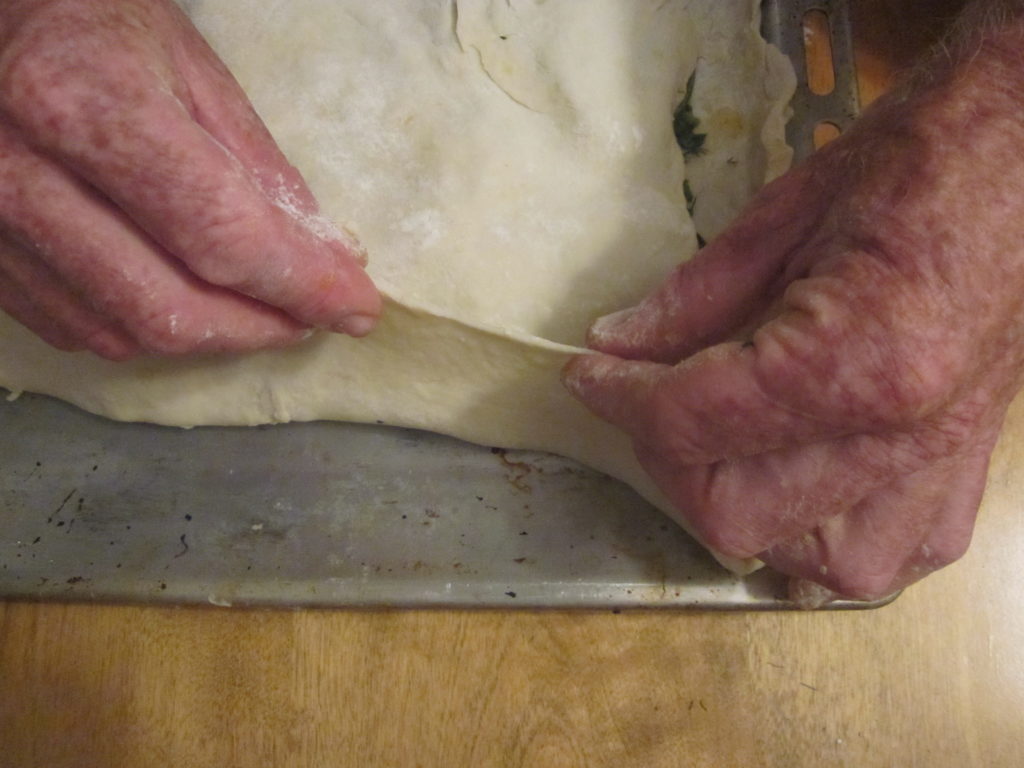
Using a pastry brush and water, paint around the exposed edge of the pie-base. Bring the edges of the pie-base up and over onto the pie lid, pressing lightly to seal.
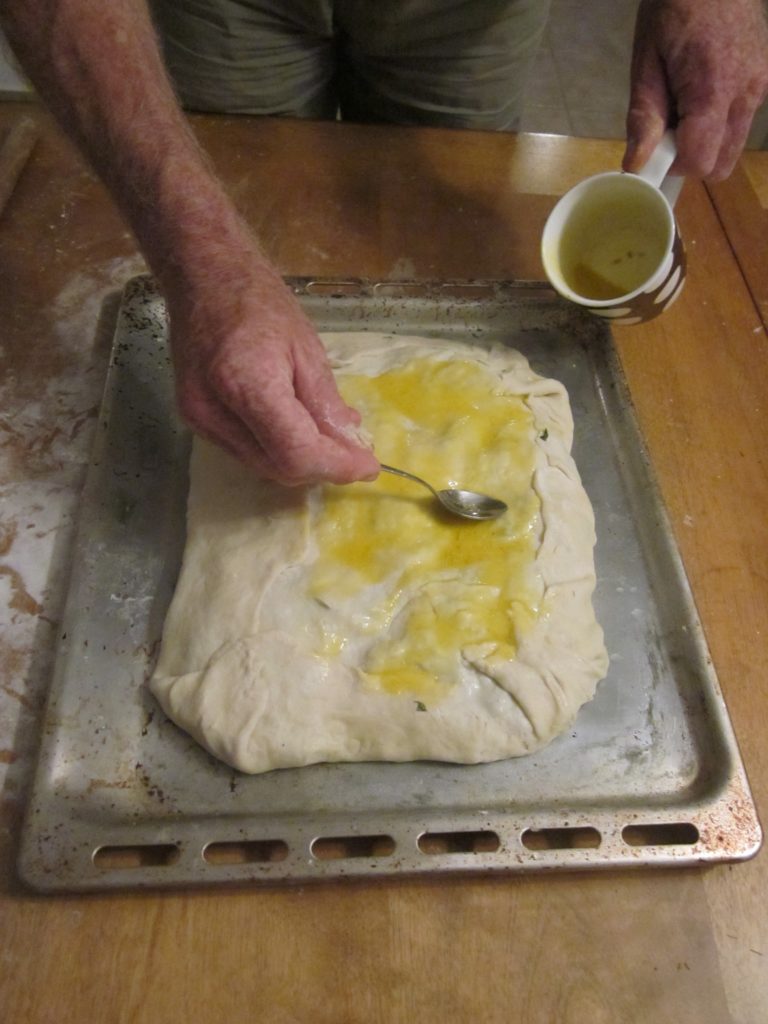
Using a pastry brush and the reserved egg and oil mix, glaze the top of the pie.
Bake at 180 C for around 50 minutes (the pie contents will settle considerably and the pastry will turn golden). This pie is traditionally eaten warm or cold but not hot.
Tips
Pies are a traditional Greek food, and small Greek villages each have their own highly-guarded pie ingredients. The Greek pastry used in this spanikopita recipe can also be used to make a range of pies. To ‘go Greek’, use the pastry to make spiced sweet pumpkin pie (kolokithopita), feta cheese pie (teropita), and vegetable pie (hortopita – similar to spanokopita but without the feta). Zuchini and egg pie is another favourite.
Did you know?
Traditionally, Greek pitas (pies) were baked in an olivewood-fired outdoor oven called a funo. The fire was lit inside the oven, the embers were raked out, and the pita was placed inside onto the hot stones to bake. If a village woman wasn’t in the mood to light her funo, she could rely on the village baker to do the baking for her. Even today, at festive times of the year such as at Easter, Greek village women can still be seen carrying their large copper pie dishes through the cobbled streets to the baker’s. For just a Euro or two, the baker will cook the pie in his still-hot oven once the day’s bread has been removed.







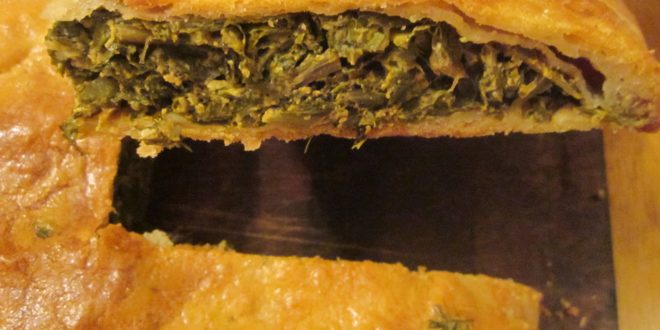

Join the Discussion
Type out your comment here:
You must be logged in to post a comment.